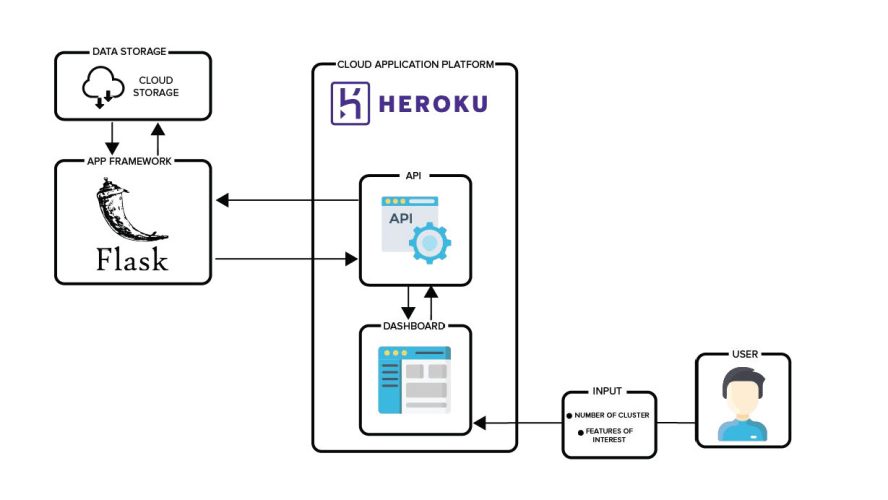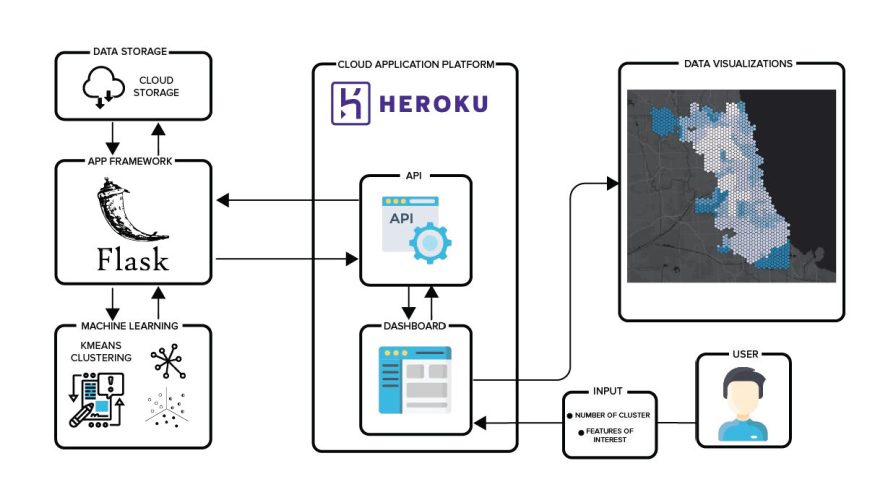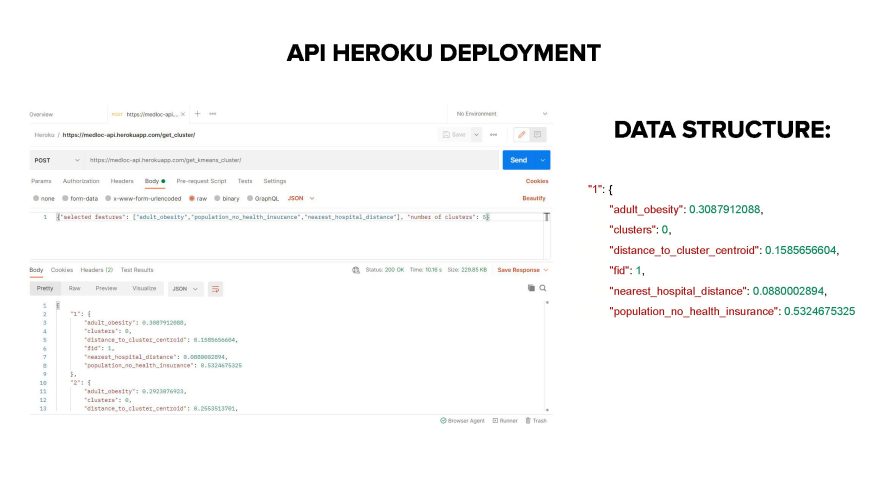MED / LOC
TAGS
#Machine-Learning #Dashboard #Urban #Collaborative-ML #Data-Viz #WebDev
Instructor
Alireza Karduni, Jefferson Ellinger
TEAM
Ashkan Radnia, Fernando Claudio, Sanaz Ahmadzadeh, Arghvan Ebrahimi, Milad Rogha , Hamideh Hosseini
TOOLS
React, Flask, Scikit-Learn, Adobe XD, Git,d3, Javascript, HTML, CSS
LOCATION / YEAR
Charlotte, NC 2020
Imagine there are different stakeholders, let us say CEO of the hospital, urban planner and let us say government official or real estate developer trying to figure out what is the best location for the hospital, considering different aspects of the city like household income, nearest bus station or any other public transport and their relationships towards each other. These stakeholders will have different aspects of the city to consider that are relevant for them. But how can they share their own opinions based on their aspects of the city. There must be the same platform so that they could share and discuss their opinions together to come up with a single decision.
Medloc is a platform that visualizes complex relationships between the different types of data geo-spatially and by behind -the -scene power of untrained machine learning algorithm, provides a vision for different stakeholders. So various stakeholders, based on their demands , or their expertise, could benefit from MedLoc.
Having different types of stakeholders in mind, First, we started to gather different types of data that could be their concern.
we made a database of those data and by means of techniques of machine learning clustered them to generate various maps.
meantime, we started to design the user interface and user experience through MedLoc, and tried to design it as much as possible intuitive and user-friendly . finally those designs were implemented in the frontend. When users open the MedLoc they see the home page. It consists of 3 main sections: explorer which shows all of the available features in the databases, preview/magnifier which shows maps and raw data associated with the selected feature(s), and finally synthesizer.
Assume Rich is one of the users that want to use MedLoc. Looking through the features list, he can tap/click on his desired feature and take a look at its details in the magnifier. When he decides to incorporate one feature into the generated results, he drags and drops it on the synthesizer map. This process can be repeated as much as he wants to get the desirable map in the synthesizer section. If he wants to see more information about a specific area on the map, he can tap/click on the hexagonal grid. Then a pop-up window will appear that visualizes much more detail on each hexagonal. Also from here, he can access the raw data if needed. On the top section of the synthesizer, there is a history bar that shows all the previous generated results. Once he was happy with the generated results on the synthesizer, he can share the results either publicly or within his work-team. To share it with his work-team, he can click on the collaboration to go to the second page. On the collaboration page, he still has access to the feature lists, but the preview and synthesizer are replaced with his coworker’s generated results. He can chat with his team, annotate their maps, highlight a specific area in their maps. To publish generated results publicly, he can go to the first page and hit save and share. Then his synthesized map will send to other stakeholders and they can log in to the MedLoc to see the results. Then the second page will be like this, providing some tools such as chatbox, annotate, and highlighting shapes to comment and communicate with each other. Also by clicking on that button the synthesized map will save in the databases of the dashboard and is accessible for other users in the future. For instance, there is a button on the home page: “let MedLoc inspire you” by clicking on that, a window pop-up that consists of a list of grouped features, their thumbnail maps and synthesizer. Suggested features are grouped together based on publicly shared results of the previous users that saved into the MedLoc datasets.
INTERFACE SNAPSHOT
DESIGN PROCESS

STORY BOARDS


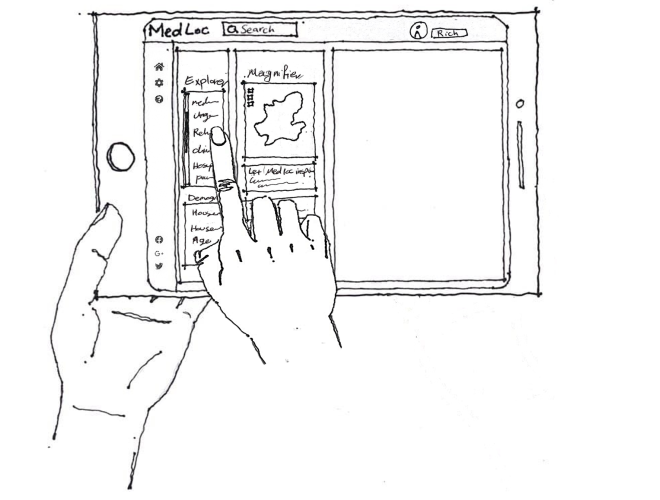

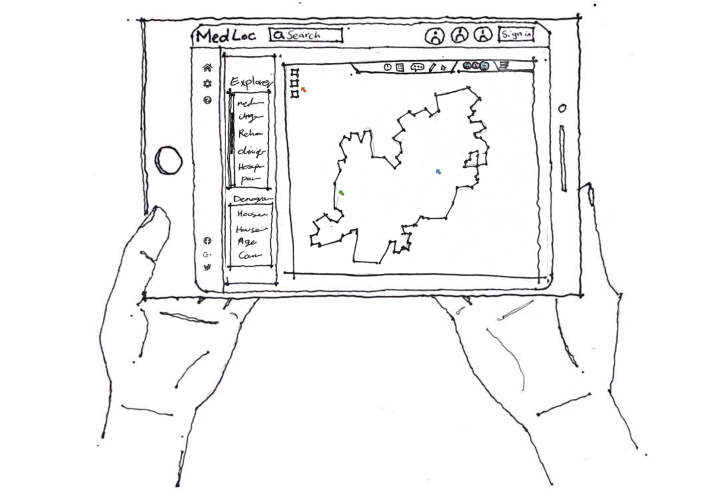
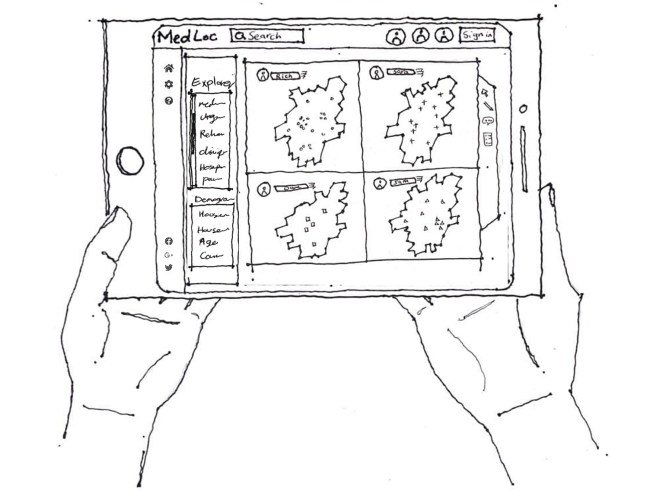





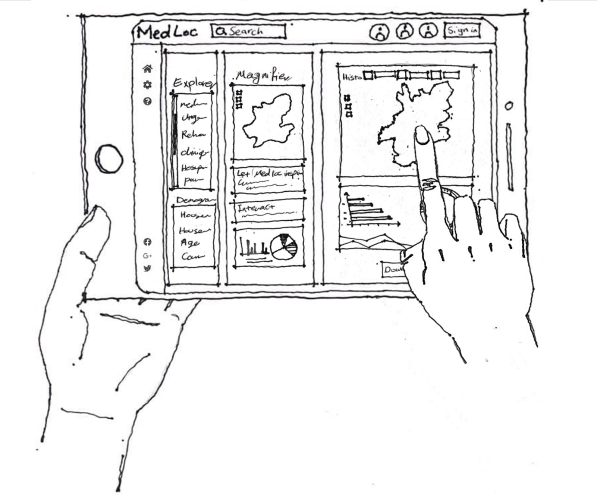


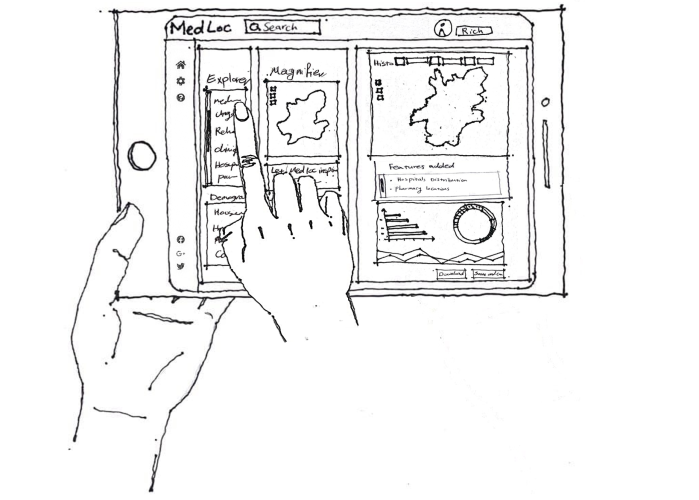

DATA PROCESSING WORKFLOW

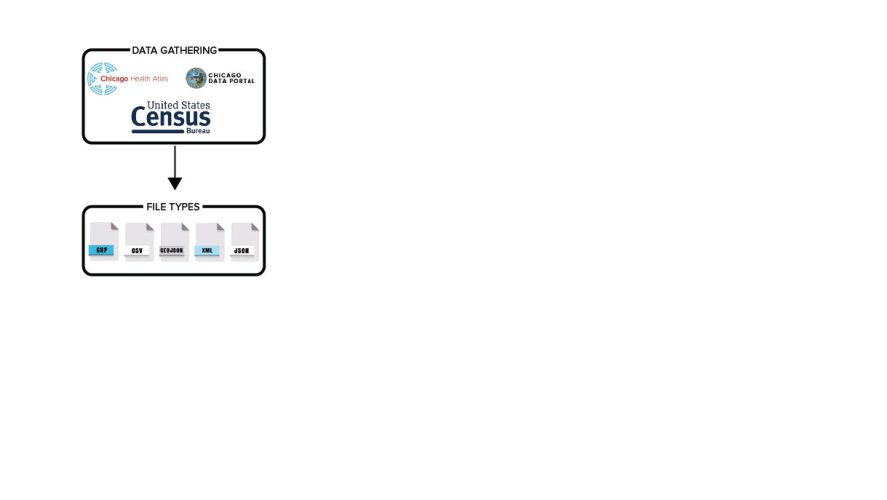


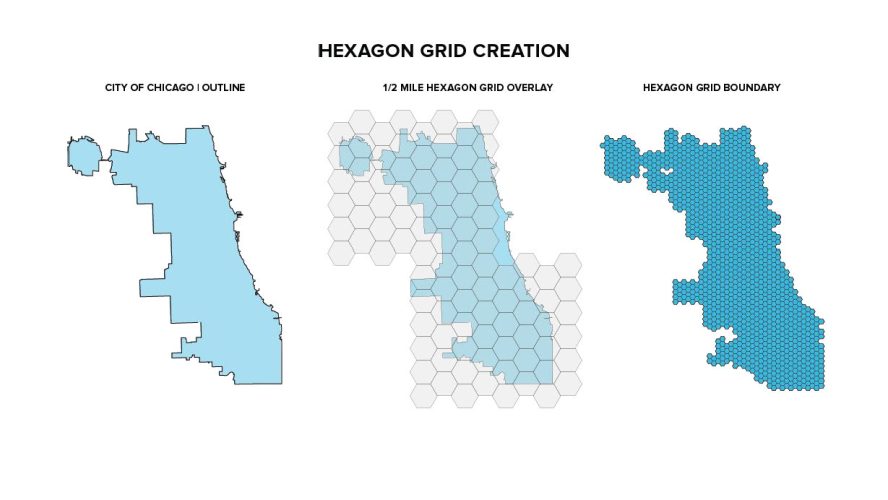



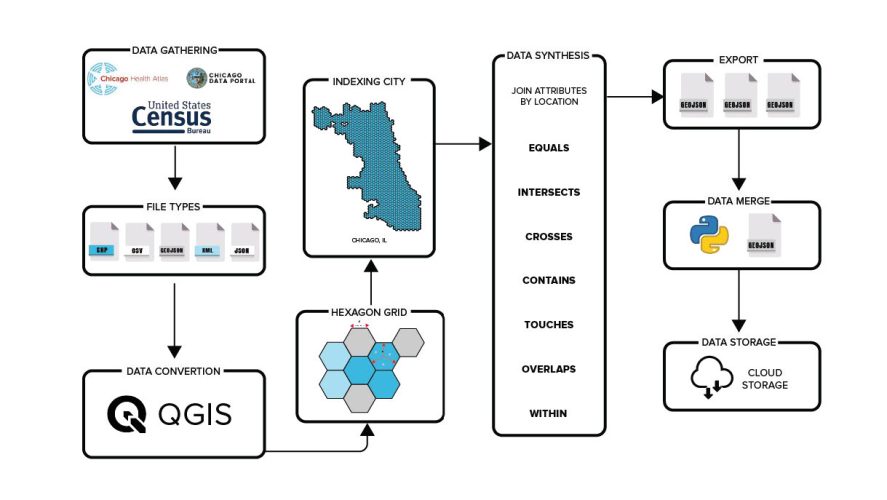
BACKEND WORKFLOW



